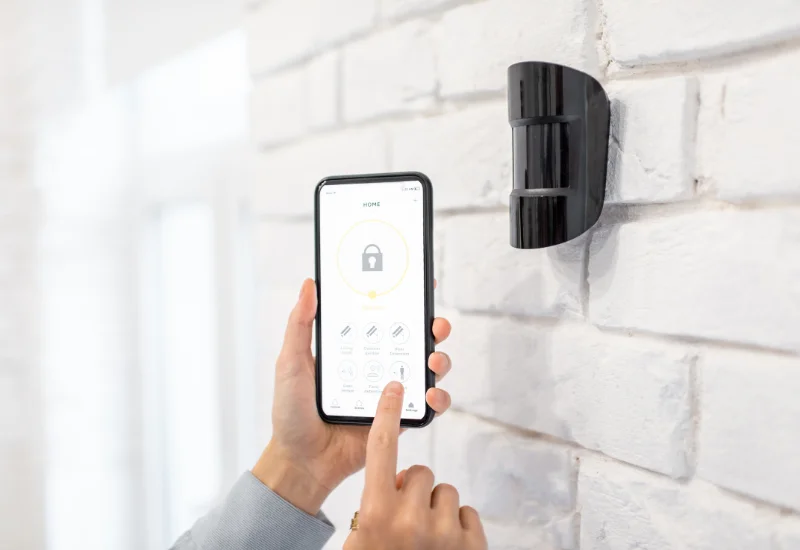
Dec 04, 2025
Written by Jill - Written: October 23, 2023

When COVID-19 took over the world in 2020, it shook up the business world. Whether they wanted it or not, companies worldwide had to adopt teleworking. It turned out to be the start of a whole new way of working, which was eagerly welcomed in all countries. It is clear today that hybrid work is here to stay.
Why is hybrid work so popular, and why should you adopt it in your workplace? This guide takes you through the benefits and challenges of hybrid work, and teaches you how to successfully implement a hybrid system in your company.
During the pandemic, most businesses didn’t have a choice. Except for industries such as food and health, companies in many countries had to shut down. Half a century ago, this would have been a disaster for most companies, but modern technologies allowed business to keep running.
For months millions of employees worldwide performed their jobs from their kitchen tables or living rooms. In some cases with screaming children in the background, with the cat on their laps or in a tiny flat where the only table suddenly had to be used for eating, studying and working. But the work got done, and economy survived.

Today most employers have welcomed their teams back to the office. But the new normal is nothing like the situation before COVID. Employees got used to the flexibility of working from home, and employers are seeing the benefits as well. This resulted in hybrid work.
Telework, also referred to as remote work or telecommuting, is working at a location other than the workplace, using information and communications technology. The most common form of telework is working from home, but it also includes working from a satellite office or a coworking space.
Hybrid work is a form of flexible work in which an employee divides his time between the workplace and telework.
An example: At Vizito, we have created a hybrid work environment. All our staff works part of the time in the office, and part from home. Days when the whole team meets in the office are agreed upon. There is a lot of flexibility when a staff member needs to be at home, for example to pick up the children from school or to receive a package.
The main purpose of hybrid work is to offer employees flexibility and a better work-life balance. But there are also benefits for the employer.
Read more
5 trends in facilities management that stand out in 2022
The switch to hybrid working offers many opportunities for both employees and employers.
For employees, a better work-life balance is paramount when choosing hybrid work. Because they have to commute less, they save time, which they can use to run errands, pick up the kids from school or for hobbies.
In addition, they can schedule their working hours when it fits for them. For example, they can choose to work when the children have gone to bed, or adjust their work rhythm to the moments when they are most productive.
Another important benefit is health. The acute health crisis may be over, but the coronavirus is far from gone. People in most countries have their freedom back, but that implies that COVID as well as other viruses circulate freely. Hybrid working means fewer people are in the office at the same time, which reduces the risk of getting infected. In addition, employees who are sick can safely work from home without infecting their colleagues.
Employees also report that their productivity and concentration are far better at home than in the office, where there are many distractions – which is an important benefit for employers.
For employers, hybrid work can also be financially interesting. Because fewer people are in the office at the same time, you can save significantly on office space - and consequently on energy costs.
If you need just one last push to adopt a hybrid system in your workplace, ask yourself this: how can I stay competitive in the post-COVID era? The corona pandemic posed major challenges to businesses, but so does the new world corona has created. Employees don’t want to go back to the old way of work: hybrid work is now becoming the new norm.
A few statistics:
Research by Buffer found that 97% of employees want to work remotely.
60% of millennials would be willing to sacrifice part of their wage for a more flexible work arrangement, according to financial services provider Bankrate.
An Owl Labs study found that 84% of workers are happier when given the opportunity to work from home at least some of the time.
According to Bloomberg, a poll by management consultant AWA found that just 3% of office workers worldwide would like to return to the office full-time.
In fact, half of them would rather quit their jobs than return to the office full-time, according to HR consulting firm Robert Half.
If company leaders want to attract new employees, keep their staff motivated and engaged, and avoid losing talent in the competitive business landscape, it seems they will have to offer the option of hybrid working from now on.
If you are going to implement a hybrid culture in your company, you may need to make some changes. Here are 6 best practices for a successful hybrid workplace.
In a hybrid work culture, staff work part of the time in the office, and the other part at home. In some cases they may choose their own working hours. This obviously requires some planning.
Some questions to consider:
Do employees get to choose which day(s) they come to the office, or do you let your managers decide?
Will you create teams that take turns coming to the office, or do you gather everyone in the office together one or more days a week?
Will you implement “hot desking”, where employees can take any available chair, or “office hoteling”, where they must reserve a workspace?
Which tasks will be done at home, and which at the office?
If staff members are not in the office every day, it is all the more important to have a clear schedule. After all, everyone needs to know where, when and how they have to work.

A second major challenge in hybrid work is communication. Not seeing your employees every day shouldn’t be a reason to compromise on communication.
An employee who regularly works from home will miss some of the conversations that take place in the workplace. You can’t assume that every employee is always aware of everything that goes on in the office. Therefore, important issues should always be communicated clearly.
Chat conversations, e-mail messages and video meetings are useful tools for good communication. Organising a (digital) meeting from time to time helps strengthen interaction and improve communication.
Telecommuting is good for productivity, but some people get lonely in their home office. It is important to keep your staff motivated so they can make the most of their work time even at home.
Guide your staff members in working out their work routine. Show interest in their home work situation, and give them the freedom to plan their own work space and time. If necessary, schedule a short phone or video call at the start or end of the day to follow up on the work done.
Even though your employees no longer come in each day, the office is still of the utmost importance to their work experience. From now on, the office stands for contact with colleagues, meetings with clients, networking, brainstorming and collaboration.
It’s more important than ever that these gatherings take place in an environment that fuels creativity, where people enjoy coming and where they can do their work with purpose.
Staff members now schedule their appointments with (potential) clients, partners, applicants and other visitors at office days. With an app for visitor management, such as Vizito, you can easily manage your appointments. In addition, you won’t waste time waiting for your guest, as you are automatically notified when your visitor has arrived. Discover for yourself how digital visitor management can help your business and try Vizito for free during a 14-day trial.

Working together from a distance may seem complicated. After all, how can each team member know who is doing which task and how the work is progressing? Fortunately, there are many tools that can help you with this.
Some popular tools for hybrid work:
To share documents: Dropbox, Google Drive, WeTransfer
To organize video meetings: Zoom, Google Meet
To communicate with your team: Slack, Microsoft Teams
Remote job interviews and remote onboarding are also on the rise, and it requires a completely new way to evaluate if an applicant would fit into the company culture.
Read more
15 simple office hacks that will make your life easier
Strengthening the bond between colleagues and cohesion within the team does not happen by itself. It requires an effort from company leaders. Here are some possibilities:
Organize team events to avoid losing contact, such as a dinner or a sports activity
Talk about things other than work every once in a while: for example, you may ask your team member about a book or a painting you see in the background
Schedule regular times when the entire team comes to the office
Hybrid work is the new normal. It requires some minor adjustments, but providing flexibility to your employees will lead to higher productivity and creativity, and in the long run, better results for your business.
To get a feel of how a modern visitor management system can help your business, try out Vizito during a 14-day trial. Chat with us or book a demo to discuss how Vizito can help you improve your reception.
Got more questions? These are the 7 most common questions about visitor management systems – and our answers.